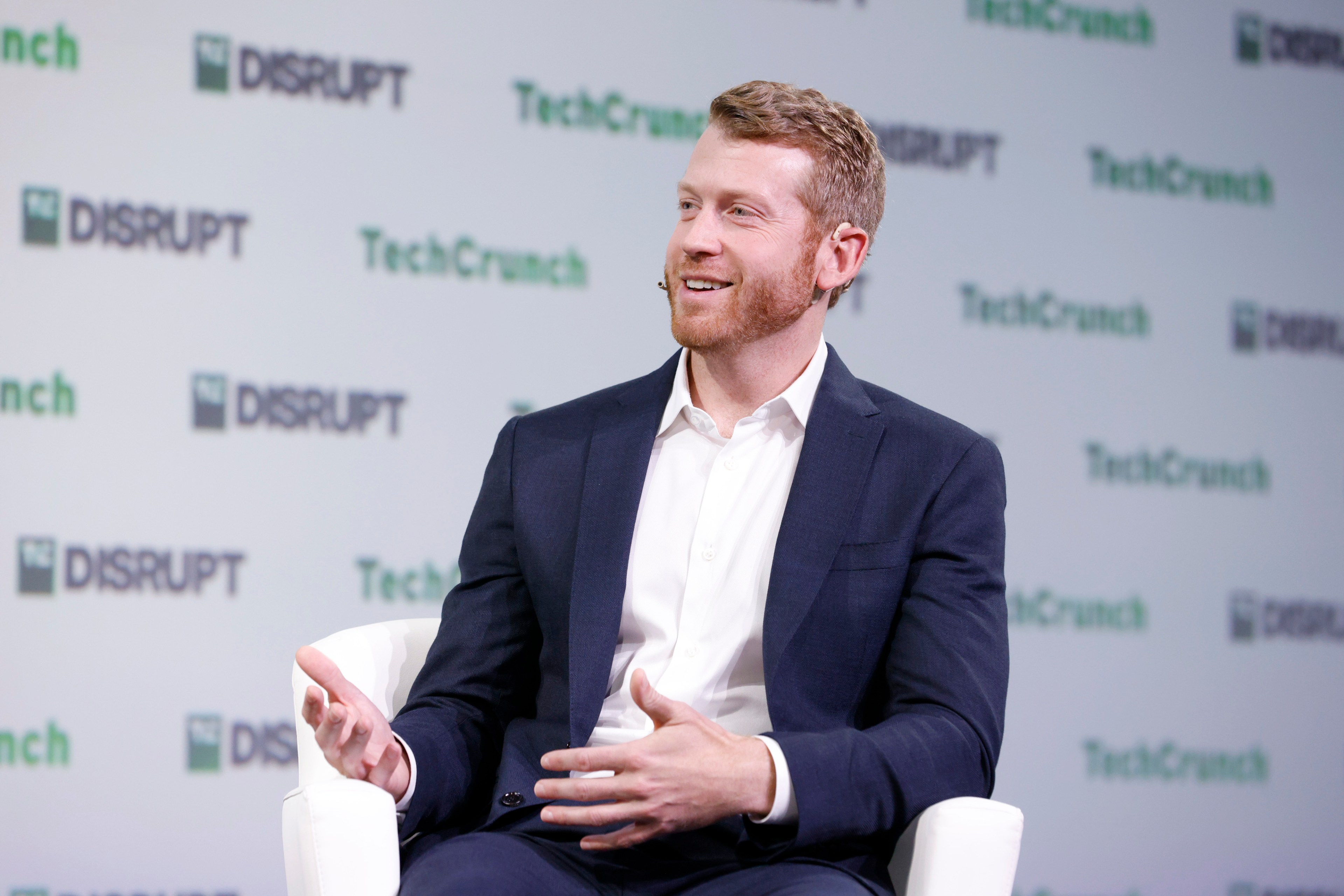Cruise CEO Kyle Vogt acknowledged that San Francisco is “one of the most challenging markets in the country” for the robotaxi company but insisted that cities should be “rolling out the red carpet” for autonomous vehicles … “if safety is the top priority.”
Vogt came out swinging with those remarks at the TechCrunch Disrupt conference Wednesday in San Francisco, which marked his most high-profile appearance in San Francisco since the California Public Utilities Commission in August cleared the way for 24/7 paid service by Cruise and its rival Waymo in the city—over the objection of the fire chief, transportation chief and other top local officials.
TechCrunch transportation editor Kirsten Korosec asked the Cruise CEO whether he thought the concerns leveled by critics—“including city officials who disagree and who are actively working to either limit Cruise or revoke the permit”—are valid. San Francisco authorities have repeatedly raised concerns about autonomous vehicles obstructing police and firefighter operations at scenes of emergencies.
Vogt acknowledged that some Cruise cars have behaved strangely in San Francisco.
“In the early days of AV (autonomous vehicles), sometimes they do things differently than a human or that look a little awkward. And I think that gets a lot of attention,” he said. “I understand that. I think it is newsworthy in many ways.”
However, he quickly went on the offensive, focusing on the company’s statistics that show its autonomous vehicles—which are programmed to adhere to speed limits and other traffic rules that human drivers often violate—are rarely involved in crashes that cause injury.
“It’s kind of fun as a society to poke at the differences between AVs and humans, but if we’re serious about safety in our cities, we should be rolling out the red carpet for AVs,” he said. “There’s really no way to look at it if safety is the top priority.”
‘We Cannot Expect Perfection’
Vogt said Cruise’s peak fleet in San Francisco is “around 400 concurrent AVs,” but it was unclear if that was before or after California Department of Motor Vehicles told the company to halve the number of cars in circulation shortly after the regulatory vote that gave them unfettered access to the city.
Korosec followed up by listing some of the more high-profile Cruise incidents in recent months—activists placing orange cones on Cruise car hoods to disable them, the Cruise that got stuck in wet cement and the death of a man after a Cruise car allegedly obstructed an emergency vehicle—before asking how Cruise will cut down on the frequency of these incidents.
Again, Vogt led with a statistic, this time about Cruise’s robotaxi fleet hitting 5 million driverless miles, asserting that “these rare events” happen “because we’re out there having the most miles, the most vehicles.”
“I see this as the beginning of a conversation with regulators, with city officials, on the reality that these vehicles are here. They have a positive impact on the society. But we cannot expect perfection,” he said. “There still will be collisions; those collisions will occur far less frequently, we hope, and that’s what we’re seeing in the data so far.”
He also argued that nitpicking Cruise’s rate of incidents distracts from the errors of human drivers, pointing to the death of a 4-year-old who was hit by a human-driven car in San Francisco last month.
“If we expect perfection from this technology and demand nothing less, we’re gonna do a lot of damage,” he said.
House Speaker Emerita Nancy Pelosi and San Mateo County Rep. Kevin Mullin on Tuesday asked federal regulators to collect more granular data, including about incidents with first responders, from Cruise and Waymo. Vogt asserted that federal officials already have that data, and said that the letter is proof that “more conversations” need to happen between Cruise and Waymo and government officials.
Vogt suggested some of the public opinion was being shaped by people who have not personally interacted with a robotaxi. “A lot of these people haven’t ridden in an AV or talked to the tens of thousands of people now in San Francisco who use this all the time, and absolutely love it,” he said.
But Vogt avoided answering a question about Cruise’s commitment to San Francisco if the city does get to redo the California Public Utilities Commission vote that approved Cruise and Waymo’s expansion.
“If it gets to that point, we can have that discussion,” before reminding Korosec that the initial approval was “a democratic process.”
‘AVs Are the Path. What Are Cities Going To Do About It?’
Vogt would not comment on whether the United Auto Workers strike would affect Cruise’s future plans, including the rollout of its Origin vehicle, which has no steering wheel, for ride-sharing pending approval from the National Highway Traffic Safety Administration. Vogt also called the expansion of more personal autonomous vehicles “inevitable.”
Korosec asked Vogt whether Cruise would lobby to eliminate “human-driven vehicles in urban centers.”
Vogt predicted no lobbying would be necessary.
“I don’t think we’re gonna have to do a thing,” he said. “I think the residents and the community members in a city are going to stand up and say, ‘We want safer, safer transportation in our cities. AVs are the path; what are cities going to do about it?’ And if we’re called to join that and help in that in some way, we’d be honored to but this is, really, I think, a question that society is going to have to grapple with.”
